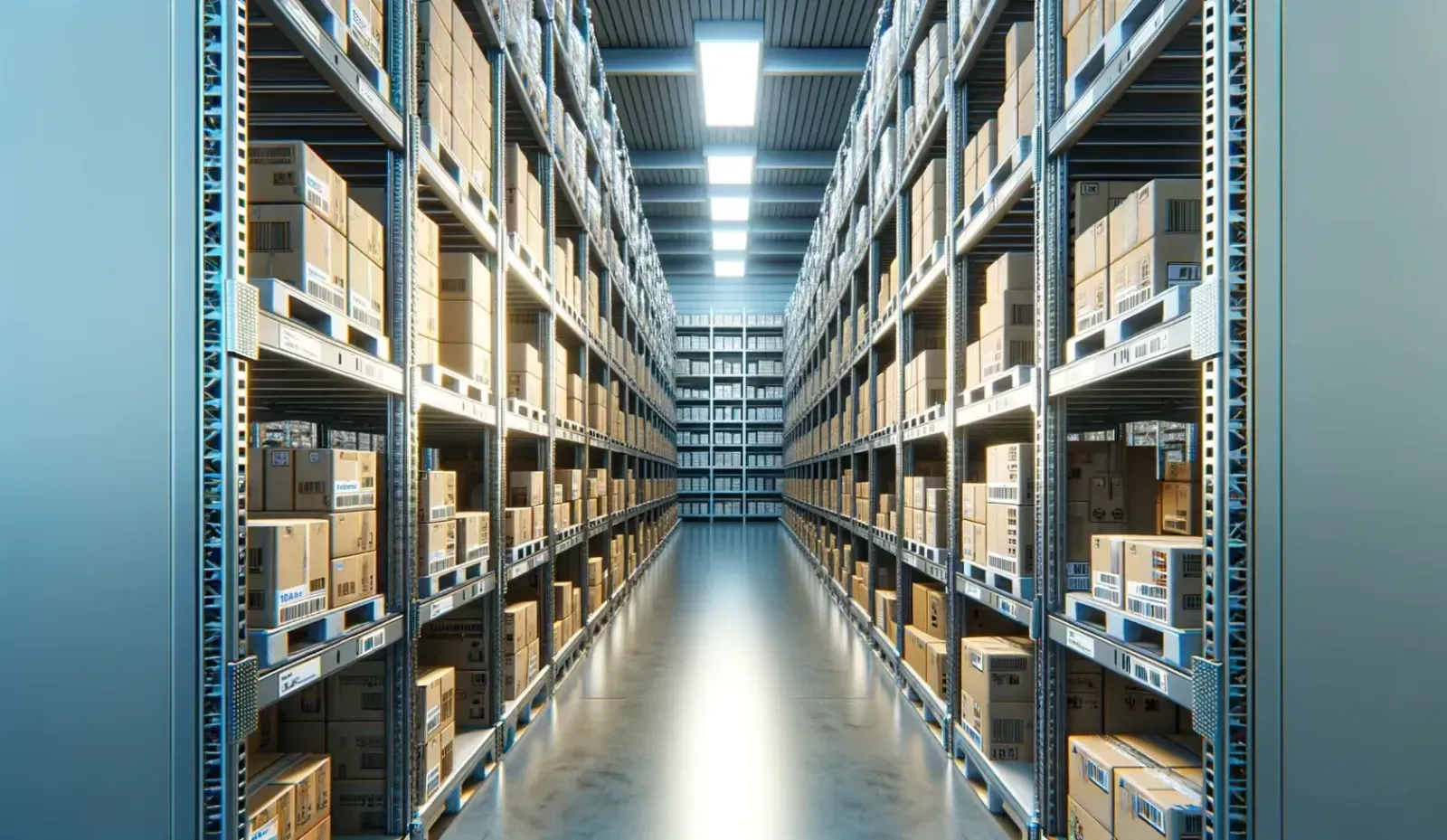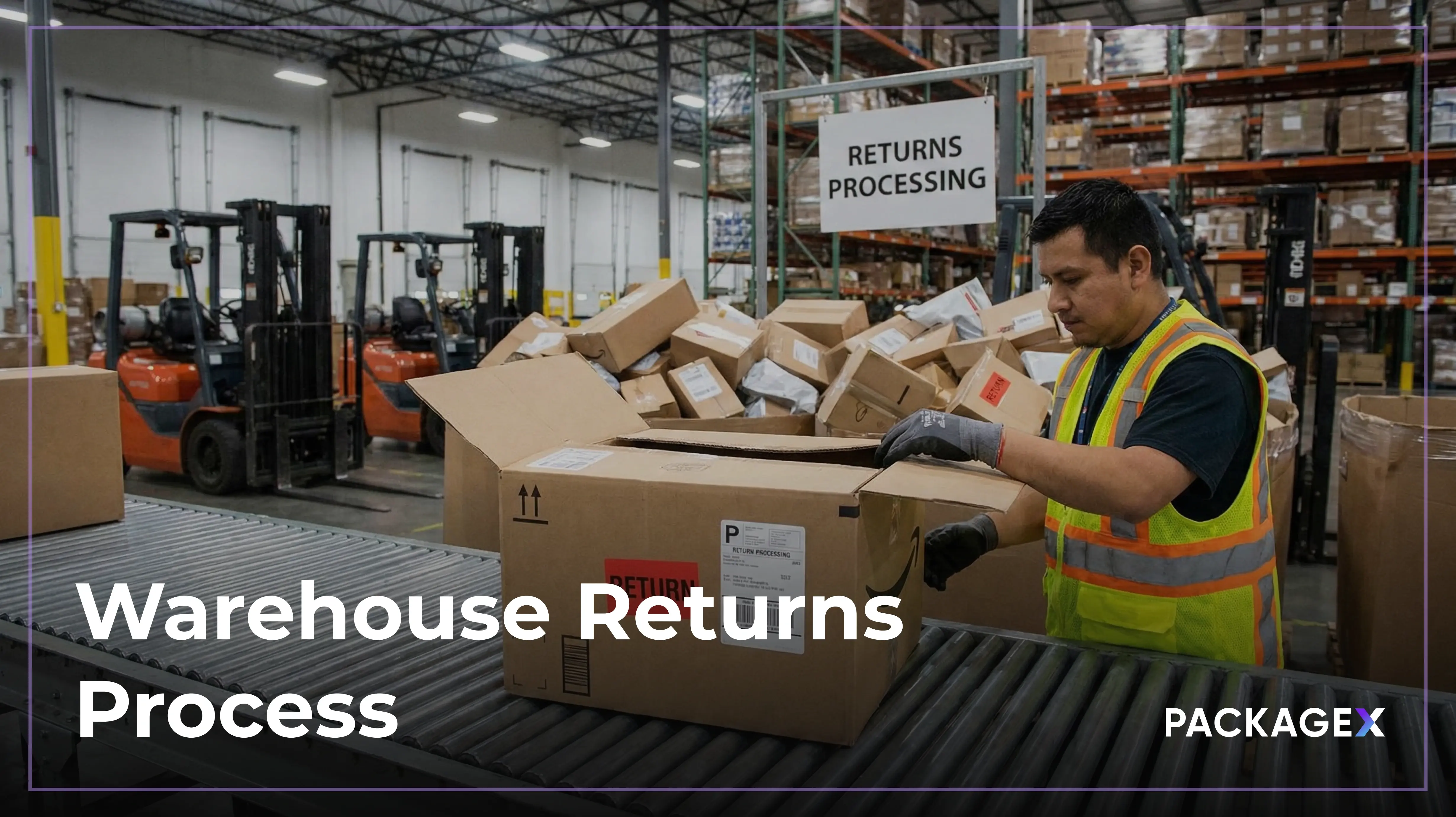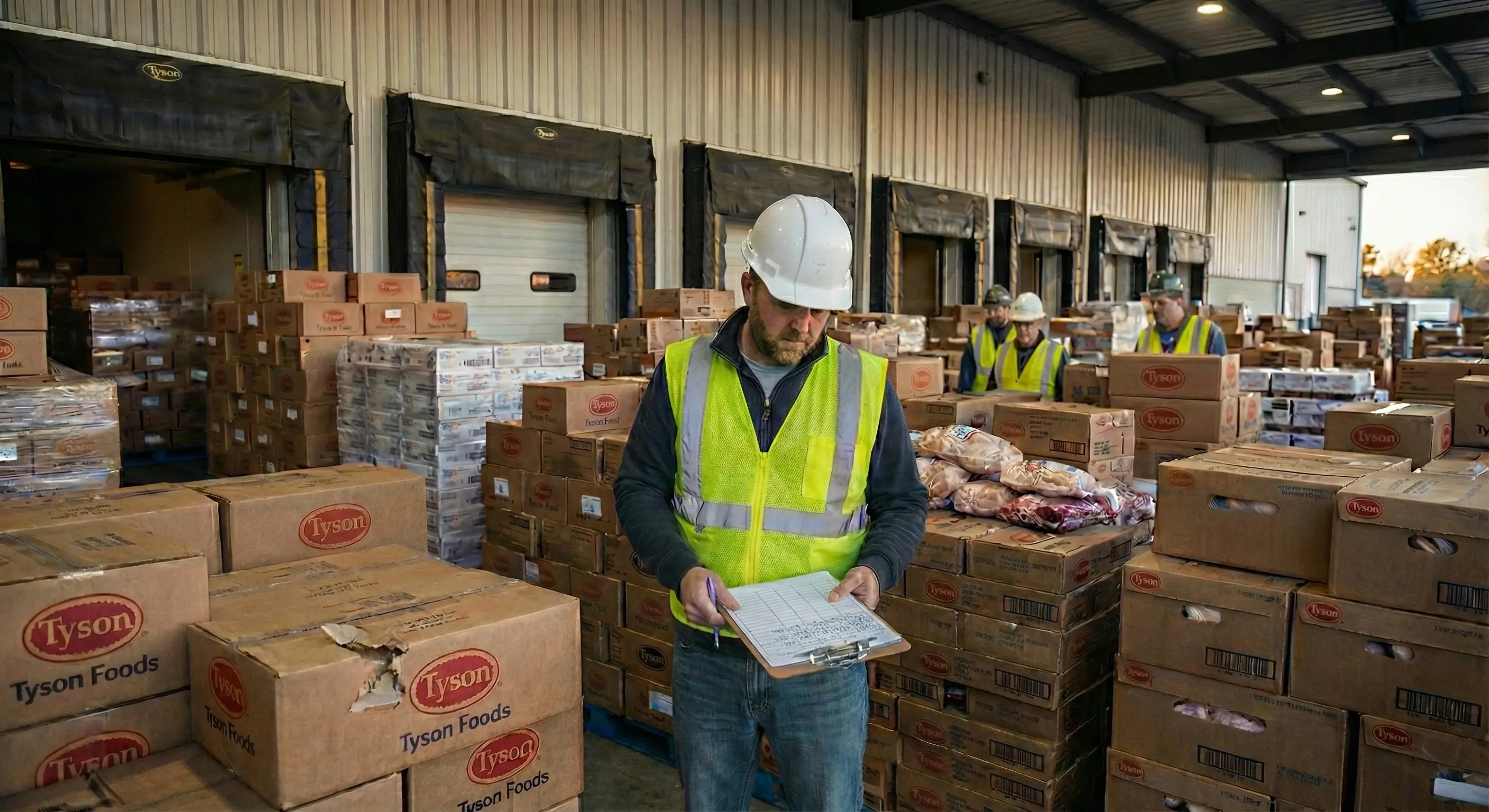Keeping track of inventory is a mammoth task. Most organizations, whether they operate as business-to-business (B2B) or business-to-consumer (B2C) enterprises, need to monitor the location of goods through the supply chain constantly. This requirement becomes more crucial in storage facilities such as warehouses and fulfillment centers, where significant volumes of goods are stored collectively.
The old-fashioned method of maintaining paper ledgers to keep inventory records has proven inadequate to the demands of today’s fast-paced business environment. Companies need a much more efficient method of logging and tracking inventory as it moves through their supply chains. A barcode inventory system is the answer, and this article will explore how it can positively impact a business.
Barcodes: The answer to inventory tracking woes
In modern-day logistics, barcodes are the backbone of inventory management. These scannable symbols can be found wherever goods are stored and traded. From singular pieces of fruit at the local supermarket to enormous aircraft components in a factory, barcodes serve as a universal method for labeling inventory, enabling convenient tracking mechanisms.
All a business has to do is scan an item’s barcode every time it moves to a new location, and the information is updated in the company database from the warehouse to the point of sale.
Barcodes have been widely used for around 50 years, starting with their introduction to the general public in the 1970s. Advances in smartphone features have made mobile scanning technology widely accessible, thereby prompting even broader use of barcodes for inventory management. In an interconnected, digital world, both buyers and sellers benefit from barcodes. A 2022 survey of US and UK-based retailers found that 83% of businesses believed offering barcode and QR code scanning apps was crucial to maintaining customer loyalty.
So what do these simple, ubiquitous symbols mean, and how do they help businesses?
What do barcodes signify?
Everyone is familiar with what a barcode looks like. It’s a sequence of broad and narrow black lines on a white background. Lately, QR codes, a newer kind of barcode, have also begun being used more frequently. Both these types of barcodes operate on a similar principle.
Barcodes are designed to be scanned by devices connected to a company’s inventory management system. The hardware scans the pattern of light and dark on the barcode, which encodes a unique sequence of numbers and characters. This sequence is used to identify the product every time it moves along the supply chain.
There are two different categories of barcodes, which are sometimes used in combination by retailers. These are Universal Product Codes (UPCs) and Stock Keeping Units (SKUs).
UPCs are 12-digit codes assigned to companies by the international agency GS1. They are used to identify the manufacturer and the product and remain unchanged regardless of where they are sold. SKUs are barcodes created by retailers for individual products in their inventory. These 8- to 12-digit sequences contain further information about a product’s characteristics and features, giving businesses greater visibility over their inventory.
What are barcode inventory systems?
Barcode inventory systems refer to solutions that use a combination of hardware and software to streamline barcode scanning and package processing workflows. Using a barcode inventory system lets companies trace their goods more easily and achieve higher efficiency in inventory management.
Some of the hardware components of a barcode inventory system are:
- Printers
- Computers
- Scanning devices
- Smartphones
A barcode inventory system’s software component can include:
- Automated inventory management systems
- Warehouse management software (WMS)
- Additional infrastructure like third-party application programming interfaces (APIs)
These components work together to create an accurate inventory-tracking solution.
However, since barcodes are universal symbols, including every single component is unnecessary. Many elements of a barcode inventory system can be customized to fit the needs of a particular business.
Guide to different types of barcodes
The best way to understand the different types of barcodes is by looking at the two most commonly used examples: linear barcodes and QR codes. While both types serve the same purpose of conveying information about a product, QR codes represent a step up from linear barcodes because they have the capacity to hold more detailed information.
What sets the two types of barcodes apart is that linear barcodes are one-dimensional (1D) barcodes, while QR codes are two-dimensional (2D) barcodes. 1D barcodes are seen on nearly every manufactured product and allow scanners to identify information about the product. 2D barcodes can include even more detailed information, such as website pages and media links, and can be printed in different sizes while retaining the ability to be accurately scanned.
The commonly seen 1D barcodes include:
- Code 39
- Code 93
- EAN-13
- EAN-128
- UPC-A
- UPC-E
- USPS IMB
Apart from QR codes, other kinds of 2D barcodes include:
- Aztec
- Data Matrix
- GS1 Databar
- MaxiCode
- PDF-417
Each type of barcode has its own limitations on the number of characters and information they can contain. Businesses looking to implement a barcode inventory system should conduct an analysis to see which barcode type best suits the nature of their inventory.
Five benefits of using a barcode inventory system
Barcode inventory systems are designed to streamline inventory management by reducing the amount of effort while increasing the amount of useful data. When paired with robust WMS and inventory management, barcode inventory systems can significantly benefit an organization. Organizations that can effectively implement a barcode inventory system can expect to enjoy improved performance in five key areas.
1. Higher accuracy
Since barcode inventory systems connect directly to automated inventory management software, they greatly reduce the chances of incorrect information entering the database. With barcode inventory systems, there is no need to persist with error-prone processes like manual data entry.
2. More reliable
Barcode inventory systems are fairly easy to use. Training employees to operate a barcode inventory system is much easier than expecting them to perform error-free manual data entry. Using barcode inventory systems reliably increases the speed and efficiency of a company’s goods moving through its supply chain.
3. Efficient data collection
Barcode inventory systems boost an organization’s data-gathering capabilities. Scanning product barcodes as they move locations lets companies take stock of their inventory in real-time. Access to timely information also helps businesses plan their stock levels to meet fluctuating demand and dynamic market conditions.
4. Reduce processing errors
All UPC barcodes have an interesting feature known as the “check digit.” This special character is included in the sequence to ensure the code was scanned correctly. It’s a feature that helps workers avoid preventable errors, like incorrectly scanning an item.
5. Conduct data-driven analysis
Logistics is a data-driven exercise. With barcode inventory systems, companies can gather useful data about their products at every stage, from receiving goods at warehouses to last-mile delivery to customers. This data helps to further optimize logistics operations and achieve greater levels of efficiency.
Challenges of implementing a barcode inventory system
Barcodes are extremely helpful in optimizing inventory tracking operations. However, choosing the right barcode inventory system and implementing it can be challenging for organizations if they aren’t prepared. Here are some common hurdles businesses face when adopting a new barcode inventory system.
Requires considerable set-up
Even though the key selling point of barcode inventory systems is how they save time and boost efficiency, getting them up and running is time-consuming and labor-intensive. Appropriate barcodes have to be printed and applied to every product, which can be a drawn-out process without automation.
Remains susceptible to employee error
If the barcode inventory system is being operated by a human employee and not automated software, it is impossible to altogether remove the possibility of human error. Something as simple as an employee forgetting to scan an item while processing it could lead to confusion in the inventory tracking system.
Initial investment costs
There are considerable costs associated with owning the devices and software licenses required to build a barcode inventory system. Businesses must be prepared to bear the initial costs. Alternatively, businesses can outsource operations to a third-party logistics (3PL) company.
Hardware and software compatibility
Since barcode inventory systems rely on specialized devices and programs, there is a chance that a customized solution could be made redundant due to incompatibility between the hardware and software. Companies should take the time to research every component and platform they will integrate into their barcode inventory system to ensure they work well together.
Data accuracy
If the barcodes are damaged during transport, the barcode inventory system could misread the information or fail to capture data accurately.
{{returns-webinar}}
Countering The Limitations of Traditional Barcode Scanning Systems with Computer Vision
The market is saturated with handheld and fixed-mount barcode scanning options that scan and capture barcodes. As technology has advanced, why haven’t traditional barcode scanners evolved to do more than simply capture codes? The technology used for ingesting barcode data should help logistics professionals achieve their goals: simplify workflows, process inventory faster, and improve data accuracy.
Computer vision is a game-changer for barcode verification because it dramatically improves the effectiveness and accuracy of barcode verification while simultaneously connecting the barcode data with relevant inventory data. With computer vision, machines will ingest and interpret visual data from a label through image processing techniques that mimic human vision. Instead of taking in one piece of data (the barcode), computer vision can ingest all the data from a label and use artificial intelligence and machine learning to detect trends, forecast, improve fulfillment workflows, and more. This can help businesses avoid many inventory challenges, including:
- Siloed & disconnected data - With only barcodes being scanned, barcode data can not be automatically ingested alongside other important fields like invoice number, ref number, and more. With computer vision, all this data is ingested with one image capture and used to optimize downstream processes, including sorting, storage, transportation, shipping, and more.
- Time Lost to Manual Entry - Many businesses use barcode scanning technologies and feed that barcode data to manual processes for tracking inventory, updating records, or sorting goods. Computer vision automates data entry processes using cameras and advanced algorithms.
- Lack of Integrability with necessary systems: Extra steps will need to be taken to integrate barcode data from traditional barcode scanning systems with essential warehouse software like ERPs and WMSs. Computer vision can be used with flexible APIs to retrieve and send information to and from a warehouse’s current systems.
Streamlined barcode scanning solutions for businesses
3PL companies like PackageX provide complete solutions for inventory management, including barcode scanning and stock-taking functions. The PackageX inventory management software goes beyond traditional bardcode scanning methods and uses optical character recognition (OCR), a subset of computer vision, to read linear barcodes and QR codes. With the Packagex OCR API, employees can feel empowered to turn any smartphone into a powerful scanner fueled by machine learning trained on more than 10 million labels. Request a demo to learn more about the OCR API and find out if it is right for your team.




